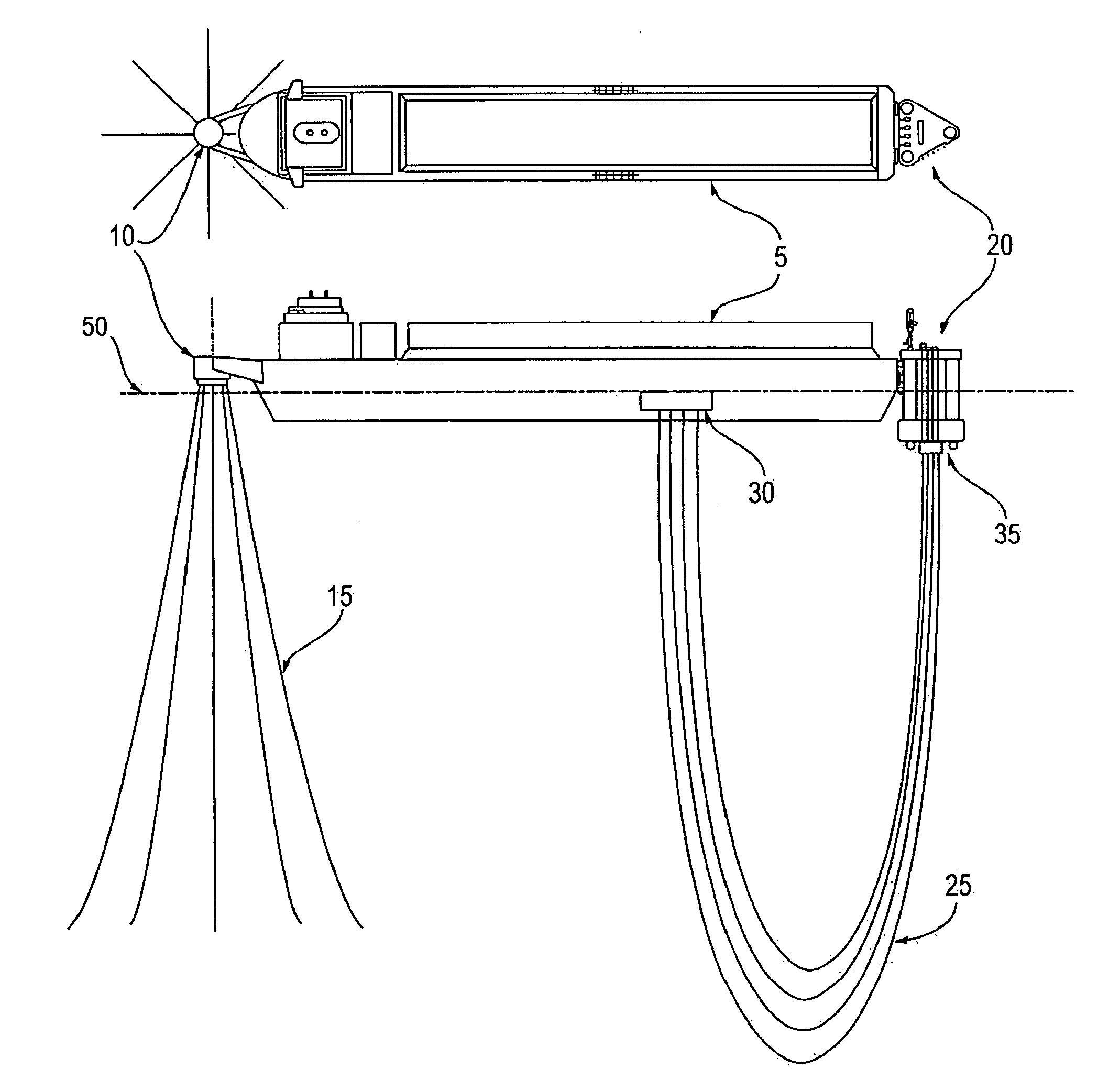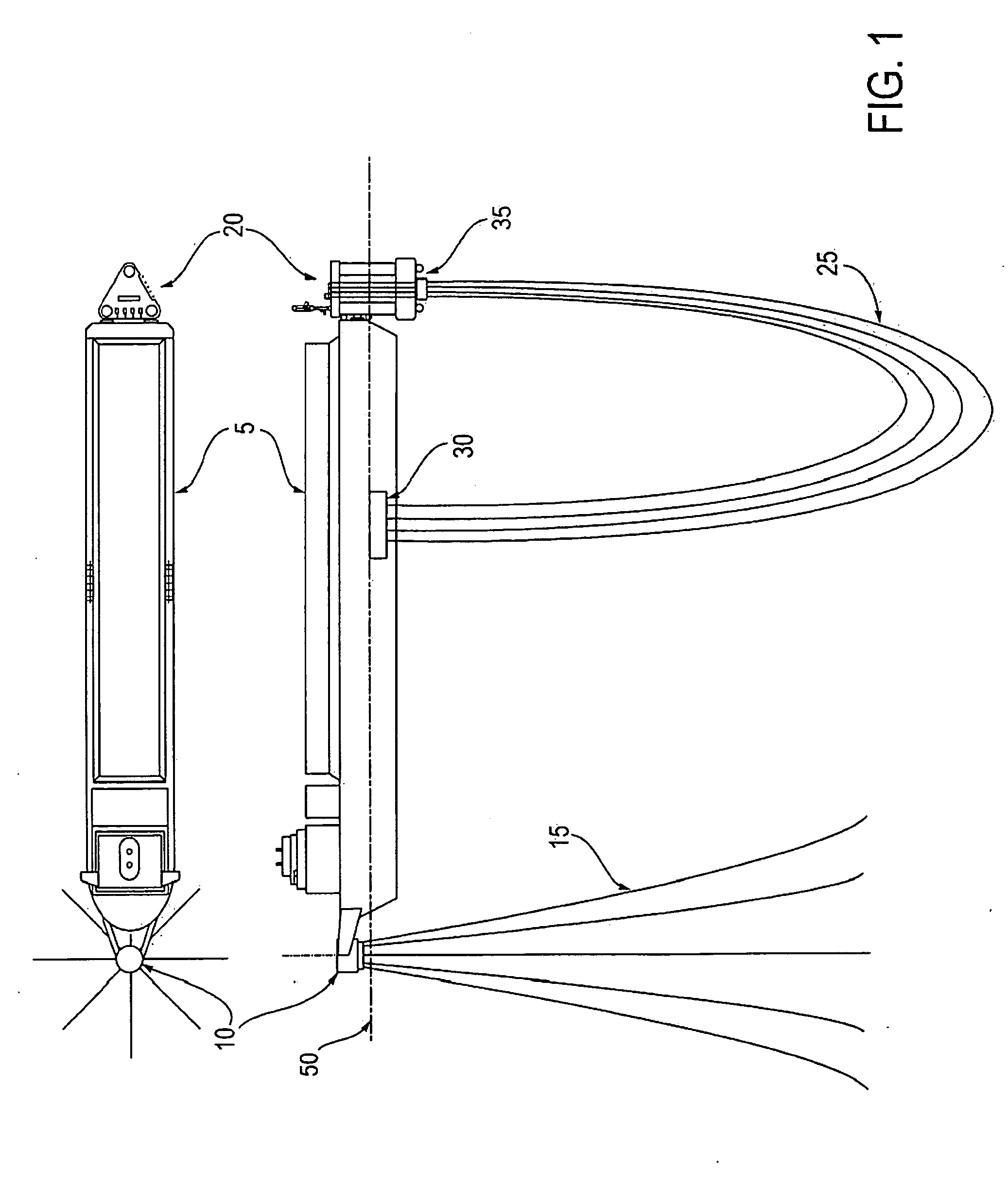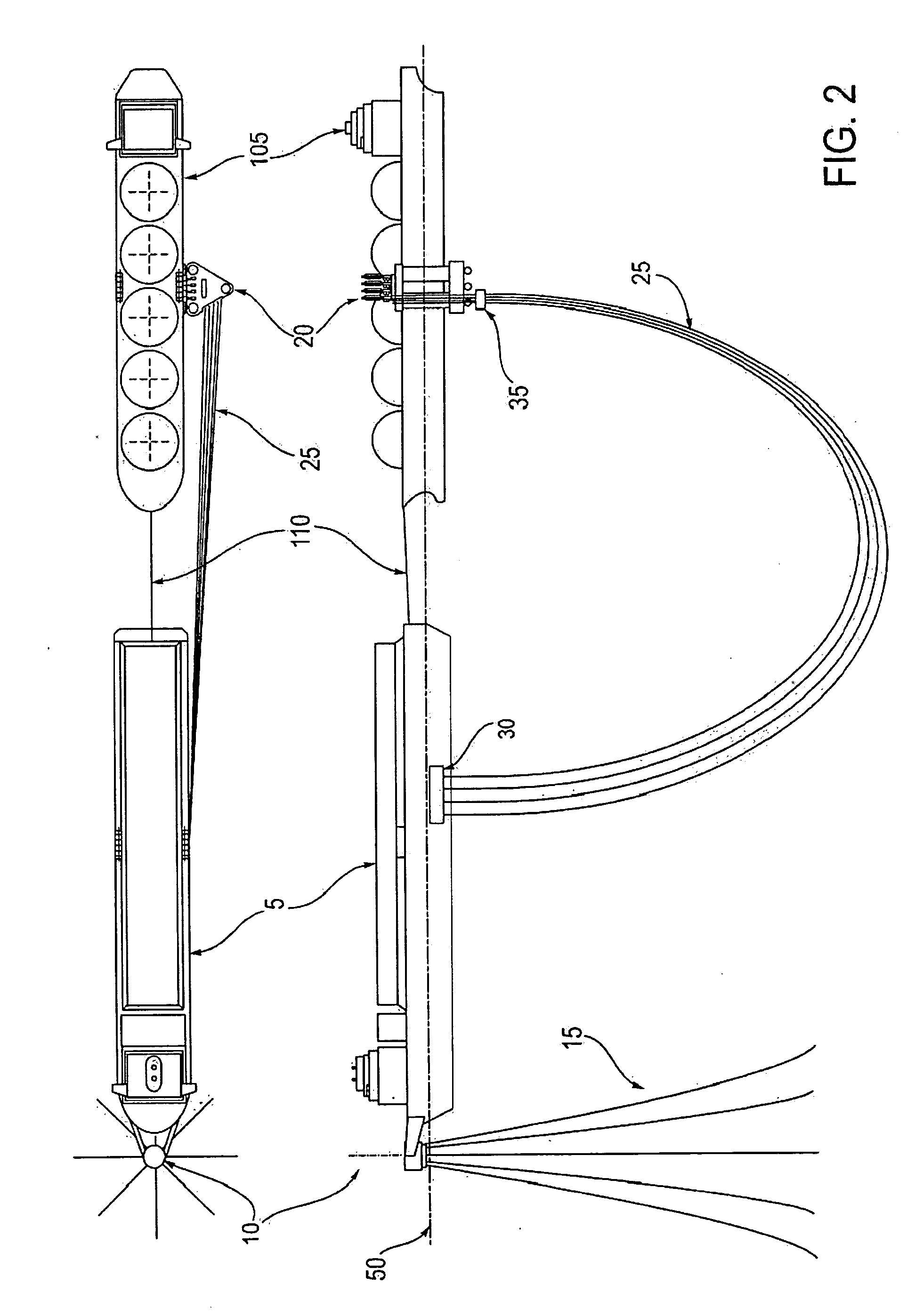Process, vessel and system for transferring fluids between floating vessels using flexible conduit and releasable mooring system
a technology of fluid transfer and mooring system, which is applied in the direction of special-purpose vessels, passenger handling apparatus, transportation and packaging, etc., can solve the problems of requiring dedicated transport carriers with extensive bow modifications, transferring fluid in unprotected locations, and affecting the safety of personnel,
- Summary
- Abstract
- Description
- Claims
- Application Information
AI Technical Summary
Benefits of technology
Problems solved by technology
Method used
Image
Examples
Embodiment Construction
[0024]In this disclosure, the term fluid refers to liquefied natural gas, liquefied heavy gas, liquefied petroleum gas, crude oil, diesel, syncrude, petroleum condensate, synthetic lube oil, naphtha, methanol and mixtures of the same.
[0025]Liquefied natural gas (LNG) is a cryogenic fluid comprising predominately methane (C1) with decreasing amounts of C2+ hydrocarbons, and is sufficiently cold to remain liquid at near atmospheric pressures. Liquefied heavy gas (LHG) is a cryogenic fluid comprising predominately C1 hydrocarbons, with lesser amounts of C2's thru C4's, and with decreasing amounts of C5's+ hydrocarbons, but requires pressurization (often between 500 and 750 psig) to remain liquid at temperatures well above that of LNG. Liquefied petroleum gas (LPG) is a near-cryogenic fluid comprising predominately C3 and C4 hydrocarbons, which can either be refrigerated to remain liquid at near atmospheric pressures or pressurized to remain liquid at atmospheric temperature. All of the...
PUM
 Login to View More
Login to View More Abstract
Description
Claims
Application Information
 Login to View More
Login to View More - R&D
- Intellectual Property
- Life Sciences
- Materials
- Tech Scout
- Unparalleled Data Quality
- Higher Quality Content
- 60% Fewer Hallucinations
Browse by: Latest US Patents, China's latest patents, Technical Efficacy Thesaurus, Application Domain, Technology Topic, Popular Technical Reports.
© 2025 PatSnap. All rights reserved.Legal|Privacy policy|Modern Slavery Act Transparency Statement|Sitemap|About US| Contact US: help@patsnap.com



